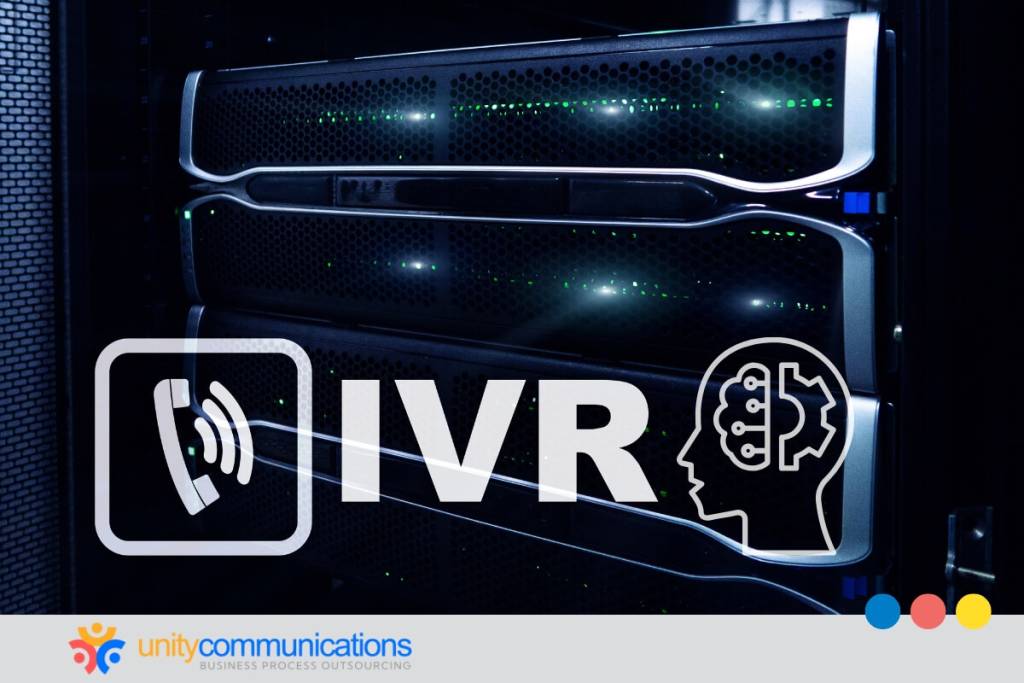Table of Contents
Do you feel your organization focuses more on consumers than the individuals who keep operations running? You are not alone. Companies have a lot on their plates. Amidst the mayhem, employee well-being gets thrown on the back burner, including that related to the technical issues they face.
Information technology (IT) and IT support outsourcing are crucial in solving employee technical problems. Specifically, a robust internal help desk enables companies to give their undivided attention to employees.
This article explores best practices for help desk management and the benefits of outsourcing. Read on to learn more.
17 Best Practices for Internal Help Desk Management

Internal help desk management supports employees with their daily tasks, and IT needs. It aims to help staff members fulfill their assigned tasks, reach their objectives, and enjoy work-life balance without hiccups. Employees can reach out to the internal support team when they encounter an issue with their devices.
Managing the help desk becomes easier when you outsource tech solutions. Outsourced service desk technicians can identify issues, provide relevant solutions, and easily communicate with employees. They ensure staff can return to work in no time so that the company experiences minimal disruptions.
Below are the best practices business process outsourcing (BPO) firms follow to assist employees and optimize workflow.
1. Treat Employees Like Customers
In business, a central philosophy is that customer engagement and satisfaction are crucial to an organization’s success. But how about the staff—the people who keep the business running?
Employee experience is equally important. To get and keep the best talent, companies should consider their concerns as well.
Individuals working for an organization that genuinely cares about them thrive. They are motivated to put their best foot forward and dread the day they have to leave.
The best BPO companies foster a work culture where employees are as valuable as customers. After all, an unhappy staff member is less likely to treat customers right.
2. Use Internal Help Desk Software
Is your in-house IT team manually managing employee IT requests and concerns? Do you find yourself losing track of current issues? If so, it is time to leverage outsourced IT solutions.
BPO companies use internal help desk software that automates workflow and tracks all tickets in a central location. Workers can check the status of their requests and track progress in real time.
Here are some features to expect from internal service desk software:
- Smart reports. These let you monitor and analyze your technicians’ performance at a glance. You can measure various factors such as customer satisfaction (CSAT), resolution time, and response time.
- Ticket prioritization. Not all issues require urgent resolution. For instance, a request for a new printer is a low-priority ticket, whereas account recovery needs immediate attention. With internal ticketing software, you can sort requests based on priority level.
- Canned responses. Preset responses are templates used to reply to live chats and emails automatically. Whenever you get common requests such as “how to operate a projector,” you can send the appropriate canned message and reply faster.
3. Provide Support on Multiple Channels
Most companies handle employee issues and concerns through email. It is a common messaging channel, but it is not enough, especially when its average response time is 12 hours.
For an exceptional internal help desk, you need to provide support on multiple platforms. Add variety to your support services by including help center, live chat, email, and messaging apps such as Telegram, Slack, and Skype.
A wide range of platforms makes it easier for staff to reach your help desk agents. They can use their preferred messaging channel and seek support from a relevant technician or team.
4. Empower Employees To Use Self-service
You can design an internal self-service knowledge base with your BPO partner. This provides employees access to IT, administration, and human resources (HR) documents when needed.
A Gartner report shows that the use of self-service options will increase by 40% in 2023.
If you want employees to use your self-service portal, emailing them will not suffice. Here are some tips to consider:
- Encourage staff to add, edit, and update content. Empower and encourage employees to add new content and edit existing information. For instance, the HR team can answer frequently asked questions (FAQs) on taxes. Alternatively, the IT team can draft new guidelines on the dos and don’ts of using the office printer.
- Let company leaders show the way. Managers play a crucial role in discussing how a new system impacts employees. Let the managers demonstrate how self-service options will make employees’ lives easier.
5. Foster a Culture of Helping Within the Service Desk
If your help desk focuses too much on reducing costs, you will deliver poor employee support. But if your BPO partner concentrates on helping users accomplish their jobs without fuss, you gain more benefits.
First, agents will be more proactive, actively looking for ways to help staff instead of waiting for them to report issues. As a result, your employees will see your internal help desk as a partner in resolving problems instead of someone to get mad at when things go wrong.
Communicate and set clear expectations with your employees and service provider. How long should staff wait to receive a response and resolve tickets? Ensure that everyone in the organization knows how to manage frustrating situations.
6. Avoid Technical Jargon
When employees contact your internal service desk, they do not want to interact with an agent using technical terms they do not understand. You cannot expect all employees to grasp each word if you often use terms such as phishing, malware, or firewall.
Understand that most workers are not familiar with IT jargon. A payroll officer uses a computer to file taxes but might not know how to update an application on the same device. Similarly, administrative staff might not realize the importance of antivirus software and secure browsing.
Hence, back-office outsourcing providers avoid jargon and use layman’s terms. This helps them build better relationships and solve problems without barriers.
7. Personalize Work Environment With Integrations and Automation
BPO firms use apps, integrations, and automation to allow your internal help desk to customize its work environment.
Automation assigns specific tickets to the appropriate technician and automatically sends status messages to employees.
For example, tickets tagged “hardware issue” go to a set technician who then marks it as “open” or “closed” accordingly. Every time they update the ticket status, the concerned employee receives an email informing them of the change.
Integration ensures agents can access systems and collaboration tools in one central location. You can also connect popular applications such as Trello, Zoom, and Slack to reduce system switching and design custom workflows. Your help desk might also need translation apps if you run an international business.
8. Get More Context With In-depth Forms
When employees discuss their problems via chat or email, they might forget important details related to their concerns.
Back-office outsourcing services help you create and upload in-depth web forms to better understand issues. Web forms include important information such as employee names, ID numbers, departments, designations, asset serial numbers, incident reference numbers, and fault types. Agents gather context and resolve issues using web forms as a reference.
Instead of getting an incomplete message such as “printer not working,” you can use forms to learn relevant information. The printer’s model and purchase date, the nature of the problem, the date when the issue began, and the solutions employees have tried are all crucial details for issue resolution.
Web forms also help you record the issues reported by employees over time. Instead of browsing through text and recordings, you can refer to the case ID and form to pinpoint the root cause obstructing productivity.
9. Create a Workflow That Tracks Problems End to End
The best BPO providers offer seamless IT support, which is key to an organization’s success.
The staff members and the internal help desk agent can view the issue’s status at a glance. This transparency reduces frustration and anxiety for all parties involved, which is better for user experience. The technician can also jump in on any ticket and look at the issue’s entire workflow to move it toward resolution.
10. Automate Problem Resolution With Bots
Virtual agents, chatbots, or conversational assistants automate the resolution process. Chatbots are often deployed on websites to send automated responses to support tickets. But you should not overlook the benefit of chatbots for the internal help desk.
The service desk can use bots to answer basic questions such as “how to replace the ink on the printer?” or “how to connect to the Wi-Fi?” Chatbots find and share relevant knowledge base content with staff before agent intervention.
When a chatbot cannot solve an issue, it automatically escalates the chat to an available help desk technician. Bots can also create a new ticket in the help desk software if the agent is unavailable.
Lastly, the return on investment for chatbots is extremely high, often beyond 1,000%.
11. Establish Internal Service Standards
Most companies have very high standards for customer service but often ignore internal service.
Internal service standards include the speed and quality of service rendered to employees. An exceptional internal service standard positively impacts employee experience.
With the help of a reliable BPO partner, you can establish high service standards that set the right benchmark for workers to follow. Plus, setting technical support metrics lets you monitor standards for continuous improvement.
For example, you can track the ticket resolution time, average ticket response time, agent ratings, and pending issues. Regular employee satisfaction surveys can measure service quality.
12. Hire Good Agents To Retain Great Employees
Hiring good talent is one thing, but keeping them is another. Staff retention has a lot to do with the employee experience.
Gartner discovered that employees who feel personally invested in their jobs are more motivated to improve customer service. Additionally, Fortune’s “Best Companies To Work For” portfolio has outperformed the S&P 500 by 84%.
Your BPO partner can help set you up for success. They invest in IT support training to equip agents with the necessary tools to succeed. Legacy agents also assist with training and onboarding, sharing valuable knowledge as tenured technicians.
When staffing an internal help desk, a reputable BPO company favors technically skilled candidates who are passionate about helping people.
13. Understand Burnout To Prevent It
People who work in IT support directly handle end users’ emotions. When users are emotional, frustrated, or angry, the agent must help them without losing tact. But balancing the constant pressure to follow excellent service desk standards with being courteous and the patient is tricky.
Your outsourcing partner can help you recognize burnout in your staff and design release valves for them, such as a no-questions-asked mental health break.
Proactively looking for ways to prevent employee burnout is one of the greatest things your BPO provider can do. Whether you outsource data entry services or internal help desk management, partnering with an esteemed BPO company can help prevent employee burnout.
14. Leverage Analytics for Data-driven Business Decisions
An outsourced internal help desk provides a goldmine of insights that let you make smarter business decisions and improve the employee experience. It gives you a deeper understanding of staff interactions with service desk technicians. It also helps identify areas for improvement.
Historical and real-time analytics are available within the help desk software. These data sets go hand in hand, so companies can forecast outcomes and act on metrics. Predictive analytics helps you anticipate staff needs and determine patterns, allowing an enhanced employee experience.
15. Learn Your Leading and Lagging Indicators
Analytics is useful, but it is even more helpful when you know what it predicts. Your service provider can help you understand which metrics indicate a need for change and brewing problems.
Lagging indicators point to where your service desk currently stands, whereas leading indicators show future conditions for the business. You can set yourself up for a more meaningful interpretation by understanding which metric belongs in each category.
16. Track and Improve Employee Satisfaction
Are your employees satisfied with the support they are getting? What is the outsourced IT provider’s ranking in terms of service quality? There is only one way to find out: an employee satisfaction survey.
Employee satisfaction surveys help you monitor how happy staff is with your internal help desk. Such feedback provides insights into the employee service experience and pinpoints anomalies in your procedures. For instance, tracking experience can improve agent performance and address gaps between the parties involved.
Here are some questions to include in the survey:
- How effective was our technical support agent in solving your problem?
- On a scale of 1 to 5, how satisfied are you with your help desk interaction?
- What areas of improvement would you highlight?
- How likely are you to recommend our company to a colleague?
Employee surveys used to be administered annually, but companies realized they should prioritize staff engagement and satisfaction to retain quality talent.
17. Celebrate Internal Success and Collaboration
All in-house teams depend on each other for success. The customer care team relies on the sales team to obtain customer information. Meanwhile, the sales team depends on the recruitment team to hire more sales representatives.
Your BPO partner encourages help desk agents to collaborate with your employees. A good outsourcing partner fosters a culture where technicians do not hesitate to help and share their knowledge.
Note that establishing the right service desk culture starts at the top. As employees notice company leaders operate by these principles, they are more likely to embrace work as one big, productive team.
Seven Benefits of an Outsourced Internal Help Desk

Once you completely have an outsourced internal help desk, you can expect to see significant rewards. Here are the benefits you can anticipate:
1. Streamlined Internal Communications
What happens when you encounter a problem at work? Whom do you contact when the computer starts malfunctioning? An internal service desk serves as a single point of contact for all IT-related employee concerns.
A well-kept IT support system facilitates the flow of information in a company. It also keeps everyone in the organization updated about potential problems.
2. Happier and More Productive Employees
You keep employees untroubled and happy when you solve IT problems before they threaten the business. Why does employee happiness matter? Happy employees are more productive.
Research from the University of Warwick shows that happiness makes workers 12% more productive. Prioritizing your internal help desk keeps staff happy and improves their productivity.
3. Enhance Employee Experience
Employees prefer working for companies that value them and listen to their concerns promptly. Strengthening your internal service desk processes improves employee experience.
Poor communication and interrupted workflow lead to most workplace conflicts. Tensions arise when a department cannot do its job, leading to poor performance. But internal service desks enable you to empower staff members, expedite problem resolution, and enhance overall employee experience.
4. Improve Interconnectedness
Connecting members of different departments using an automated service desk improves communication throughout the organization.
Getting people from different departments to communicate is a major hurdle. IT support reduces departmental confusion and keeps your business running well.
5. Focus on Core Responsibilities
Internal IT support streamlines company knowledge, thus helping everyone focus on their core responsibilities. Regardless of your industry, you benefit from higher productivity because an employee focus on core functions provides more opportunities for the entire organization to be more effective and competitive.
Integrating a centralized knowledge base within help desk software is crucial to smooth operations. When each employee gets answers to their questions immediately, they are more productive.
6. Improve Speed
Delayed tickets easily pile up when agents are busy solving complex issues. The resulting backlog leads to burnout and higher turnover.
Instead of adding more stress to your employees, you can use outsourcing to clear backlogs faster. Outsourced IT trends show that improved speed is an advantage for help desk services. Help desk applications are smarter now and can solve most problems efficiently.
7. Promote Organizational Knowledge
Automated help desks can integrate with multiple applications. Bots can help employees find necessary information without having to log on to individual software applications.
A chatbot can tap into e-commerce platforms, project management software, and customer relationship management (CRM) applications. It can call up granular information in mere seconds.
The Bottom Line
The best BPO provider gives you the best internal help desk by using the latest tools, supporting multiple channels, hiring and training good talent, leveraging automation, and creating a streamlined workflow. A reputable BPO company treats your employees as customers and prioritizes their experience.
To retain exceptional talent and grow your business, you must invest in an internal service desk system. Unity Communications can help you track and resolve employee issues in a centralized location.
Contact us now to find out more!




